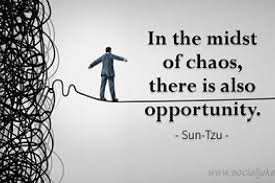Many of us have to participate in the budgeting process and it usually is not the most pleasant process. Let's take a look at the context for creating our 2022 Tech Budgets. Besides business and organizational trends, the trends in technical spending come into play. Gartner published actual spending trends for technology in July and organizations have an increased spending level of 8.6 % to date. In that same report, Gartner predicted a 5.3% increase in spending for 2022 that is an overall decrease of 3.3%. The big increase is in enterprise software at 11.7 % that is counter to the decrease. The question is what kind of software should organizations be investing in? This post identifies my prediction of the most popular software purchases for 2022. They are in no particular order. Each organization needs to allocate their increase in several of these categories even though there may be some pioneering.
Results-Oriented Communications (ROC)
With all the emphasis on attaining better business outcomes, innovation, digital transformations, and better resource management, a new category of software has emerged to focus important communications and tie them to actual results stakeholders really want. ROC helps create and maintain a laser focus on results and helps organizations cut out the noise communications. Here are some detailed readings on the topic:
Results-OrientedCommunications Post
Management Cockpits/Data Science
A management cockpit allows management to grasp complex situations quickly by integrating all the pertinent data, promoting the collaboration of many individual views of information necessary to make the required decisions as soon as possible, thus taking proper and timely adjustments or actions. It is an integration of crucial perspectives that leverages data science and the latest data. Here are some detailed readings on the topic:
Real-Time Data Mesh/Fabrics
The shackles are off for the next generation of databases, but the challenges are steep. Few organizations have a holistic and pervasive view of where their data is and how to best view and operate on it. The new databases act as meshes that know where the data is and can combine it in various time channels in real-time at best and on short notice at worst. Without really having to know where the data is, business pros can access their specific views for their purposes if the data is housed or in a nearby could infrastructure. Here are some detailed readings on the topic:
Human Augmentation & Skills Leverage
Technology will provide new perspectives on work, particularly from the outside in the new digital experience. In addition, technology will supercharge our skills to a higher level where there are current skills and will allow for the heterogeneity of work even when skills are scarce. The idea of pure specialization will recede as people are assisted with work by leveraging additional intelligence applied in context with hybrid data. Here are some detailed readings on the topic:
Intelligent Autuomation
Organizations depend on automation to lower costs or provide a funding mechanism for new digital approaches or both. This means that automation moves from mechanically focused speed increases, and reduction of human tasks to smarter and data-informed approaches that leverage process, mining, AI, and bots teamed up with AI-assisted human collaborators. There are many automation streams that are coming together with specialty digital business platforms(DBPs). Here are some detailed readings on the topic:
Net: Net:
Organizations will have to balance automation with better customer journeys while learning how to master the evolving and emerging digital technologies. It means that budgets will have to be aligned and realigned often as digital moves forward. All this digital activity while business strategies evolve. Confidence can be gathered from looking both to the past and the expected future in determining the best budgeting now. Here are some detailed readings on the topic:


